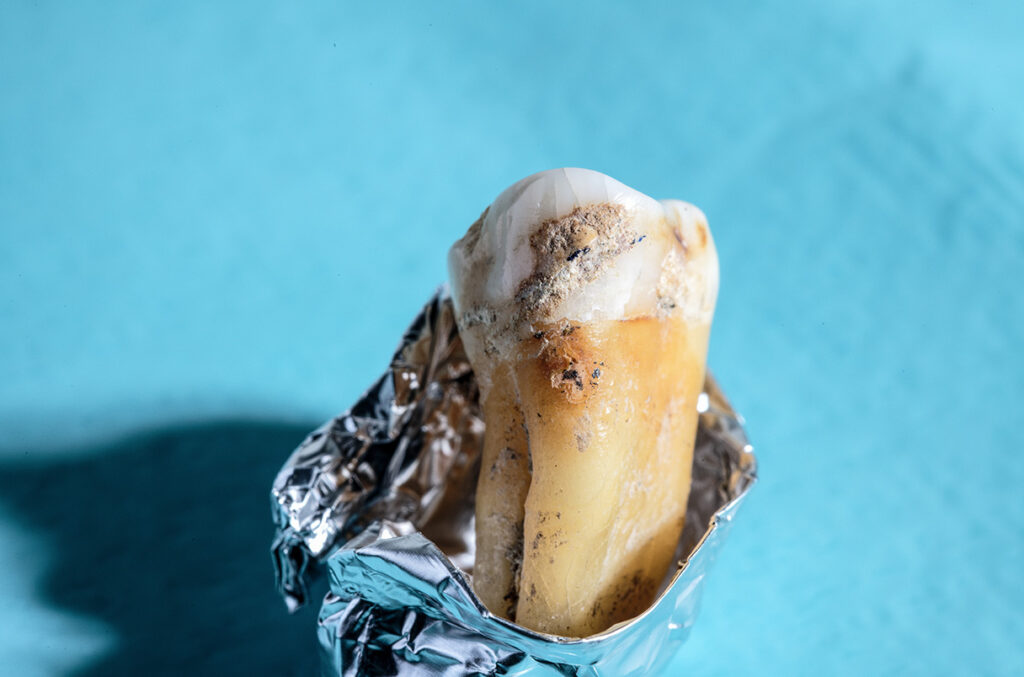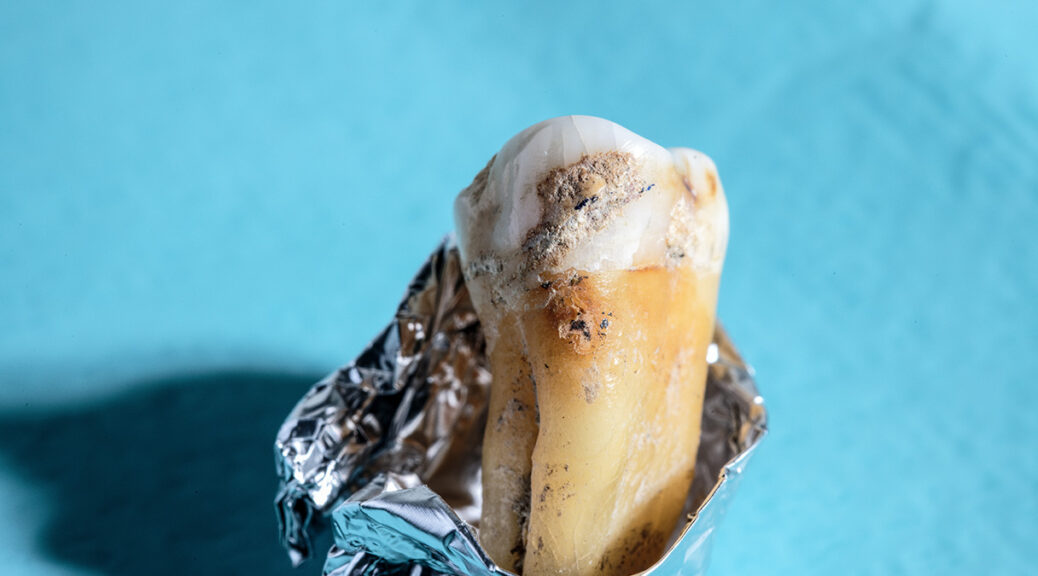‘Lost’ microbial genes found in dental plaque of ancient humans

About 19,000 years ago, a woman died in northern Spain. Her body was deliberately buried with pieces of the natural pigment ochre and placed behind a block of limestone in a cave known as El Mirón.
When her ochre-dyed bones were unearthed in 2010, archaeologists dubbed her the Red Lady. The careful treatment of her body provided scientists with insights into how people from the time buried their dead.
Now, thanks to the poor oral hygiene of that period, her teeth are helping illuminate a vanished world of bacteria and their chemical creations. From dental calculus, the rock-hard plaque that accumulates on teeth, researchers have successfully recovered and reconstructed the genetic material of bacteria living in the mouth of the Red Lady and dozens of other ancient individuals.
The gene reconstructions, reported today in Science, were accurate enough to replicate the enzymes the bacteria produced to help digest nutrients. “Just the fact that they were able to reconstruct the genome from a puzzle with millions of pieces is a great achievement,” says Gary Toranzos, an environmental microbiologist at the University of Puerto Rico who wasn’t involved in the work. “It’s ‘hold my beer, and watch me do it,’ and boy did they do it.”
Changes in diet and the introduction of antibiotics have dramatically altered the modern human microbiome, says University of Trento computational biologist Nicola Segata, who also wasn’t involved.
Sequencing ancient microbes and re-creating their chemical creations “will help us identify what functions our microbiome might have had in the past that we might have lost,” he says. Resurrecting these “lost” genes may one day help scientists devise new treatments for diseases, adds Mikkel Winther Pedersen, a molecular paleoecologist at the University of Copenhagen.
Within the past few decades, sequencing ancient DNA has illuminated physical and physiological features of long-dead organisms, but researchers have also used the same technique to examine the genes belonging to the teeming bacterial communities, or microbiomes, that once populated the mouths and guts of long-dead people.
That work has given them insights into which microbial species might have coexisted with humans before the advent of antibiotics and processed foods. But such understanding has been limited by the fact that researchers could only use modern microbes as references.
“We were limited to bacteria we know from today,” says Harvard University geneticist Christina Warinner, a co-author of the new study. “We were ignoring vast amounts of DNA from unknown or possibly extinct organisms.”
Breaking that barrier presented a monumental challenge. Reconstructing an oral microbiome—a soup of hundreds of different bacterial species, and millions of individual bacteria—from degraded ancient DNA is “like throwing together pieces of many puzzles and trying to solve them with the pieces mixed up and some pieces missing entirely,” Segata says.
Indeed, it took Warinner’s team nearly 3 years to adapt DNA sequencing tools and computer programs to work with the much shorter fragments of DNA found in ancient samples.
At long last, drawing on dental calculus from 46 ancient skeletons—including a dozen Neanderthals and modern humans who died between 30,000 and 150 years ago—Warinner and colleagues identified DNA from dozens of extinct or previously unknown oral bacteria.
Next, the team equipped modern Pseudomonas protegens bacteria with a pair of ancient genes to make proteins that produce milligrams’ worth of a molecule called a furan.
Modern bacteria are thought to use furans for cellular signaling. The new findings suggest ancient bacteria did, too—something that would have been impossible to predict by simply sequencing their genomes. “It’s wet-lab proof of what ancient genes were capable of,” says Pierre Stallforth of the Leibniz Institute for Natural Product Research and Infection Biology. “You can predict proteins based on DNA, but not necessarily the molecules those proteins are going to make.”
At first glance, the microbe they reconstructed seemed out of place in an oral microbiome. Identified as a type of bacterium called a chlorobium, its modern relatives use photosynthesis to survive on small amounts of light and live in anaerobic conditions, such as stagnant water. They aren’t found in modern mouths and appear to have vanished from ancient humans about 10,000 years ago.
This chlorobium might have entered the mouths of ancient people because they drank water in or near caves. Or, Warinner says, it might once have been a normal part of some people’s ancient oral microbiome, surviving on faint light penetrating the cheek.
Colleagues say dental calculus was an ideal place to start looking for these ancient microbes. Without regular cleaning, teeth trap leftover food and other organic matter in a mineral lattice, essentially encasing it in stone. That both helps preserve any DNA inside and protect it from contamination as the body decays. “Oral calculus is the perfect example of the best place you can find an uncontaminated sample,” Toranzos says. “There’s absolutely no way anything from the outside will get in.”
Although the researchers succeeded in prodding modern bacteria to express their previously undiscovered or extinct cousins’ genes, it’s a far cry from Jurassic Park, Warinner says. “We haven’t brought [the microbes] back to life, but identified key genes for making chemical compounds we’re interested in,” Warinner says.
The recovery of ancient microbial genes has the potential to illuminate our species’ relationship with bacteria over human evolution. Humans coevolved with their microbial partners and parasites for hundreds of thousands of years. The compounds produced by ancient microbes might have played important roles in digestion and immune responses. “Bacteria are not as charismatic as mammoths or woolly rhinos,” she says, “but they are nature’s chemists, and they’re key to understanding the past.”
